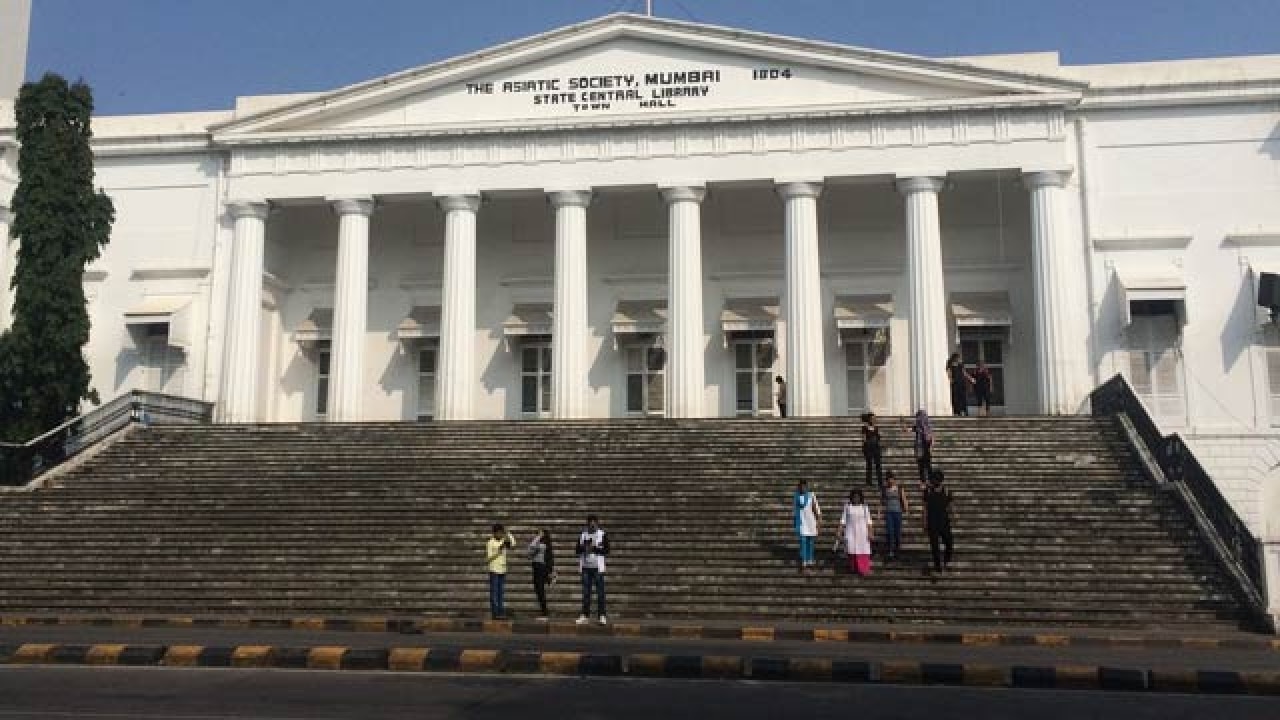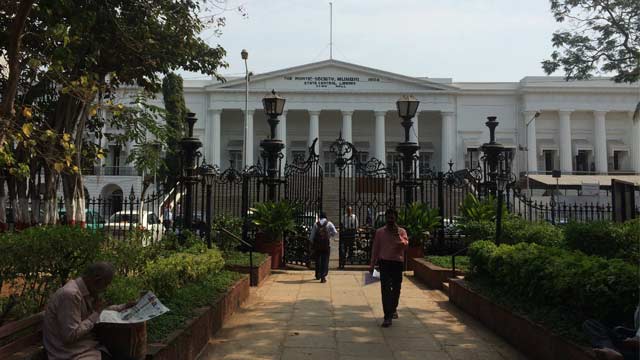
What better way to begin a monthly column on museums in India - their remarkable, largely hidden histories and collections, their unique function, challenges and relevance today - than by focusing on a site that could be, and should be, one of Mumbai’s leading museums. A landmark that has stood witness to crucial moments of change and beginnings, and which, in its design, location, histories and collections offers a tangible link with the past, yet is not an open, accessible, thought provoking museum. My focus is the former Town Hall, situated at Horniman Circle in the heart of the ‘Fort’ area - the city’s foremost heritage and tourist district, and birthplace of modern Mumbai. The Town Hall is now the State Central Library; its iconic building is also, significantly, home to the Asiatic Society of Mumbai, a society of scholarship and research since 1804.
Visit the building today and you may be left with a sneaking suspicion that you missed out on all the stories it has to share. You might recognise its design as Neo-classical, dominated by fluted Doric columns and triangular pediment, but would you be able to appreciate how new, even out of place, this imported style must have appeared to people in Bombay in the early 19th century? Or read the inherent message of power in an imperial design inspired by ancient Greece, considered the pinnacle of Western civilisation? Whilst its columns were shipped here from England, the building was also logically adapted to suit the local climate. Look beyond the columns to the carved wooden awnings above the tall entry doors - an indigenous means of making interior spaces bright and cool by keeping out the sun but letting in the breeze. A give and take that characterises so many of Mumbai’s historic forms and spaces.
A marble plaque on the building records its completion in 1833, but nothing helps you see its immediate surroundings at the time. As the Town Hall, a place of civic governance, public meeting and debate, the building was deliberately situated at the centre of the fortified town of early 19th century Bombay. In front of the building, facing west, lay the Bombay Green, a busy trading ground; sitting on the building’s steps today you might completely miss the chance to imagine the sights and sounds of the day’s business being conducted by Bombay’s diverse trading communities - Bohras, Banias, Parsis to name just a few - each in their own dress and speaking their own language. Sitting there, you would also be likely to miss the fact that on a November morning in 1858, the then Governor of Bombay, Lord Elphinstone, stood on the same imposing, iron-railed steps in the aftermath of 1857 and read to the city’s people the Queen’s Proclamation, informing them of the abolition of the East India Company, and that India would thereafter be ruled by Victoria and that they were now her valued subjects.

Photo: Alisha Sadikot
Shortly afterward, the building served as anchor and focal point in the development of a growing city’s first business district, Elphinstone Circle - now Horniman Circle - following tumultuous events in the early 1860’s. With the returns from Bombay’s skyrocketing cotton trade during the years of the American Civil War, the walls of Bombay Fort were demolished; the Bombay Green was restructured into the now familiar circular garden, with identical buildings intended for commercial use forming an arc on either side. Not that there is any indication of this significant moment of change and development at the site.
Inside, the Town Hall is now the State Central Library. Currently under restoration to strengthen the structure and refurbish its interiors, the room is otherwise crowded with books, and with people reading the day’s newspapers. There is little sense of the historic events that have occurred there - public lectures and debates, fiery political speeches and meetings, especially during the independence struggle! Also housed in the building, since its construction in 1833, is the Asiatic Society, a scholarly institution of great renown. Founded in 1804, the Society has ever since been dedicated to the study of India. Two hundred odd years later, the Society can boast of an unrivalled collection of antiquities, manuscripts, rare books, maps and coins. Collections that include fragments of what is believed to be the Buddha’s begging bowl, a 14th century illustrated manuscript in Italian of Dante Alighieri’s Divine Comedy, a 16th century copy of the Persian epic Shahnama or Book of Kings by Firdausi, a rare gold mohur coin issued by the Mughal emperor Akbar, statues of some of Mumbai’s leading scholar citizens, old newspapers documenting historic events such as India’s first Independence Day and the death of the Mahatma - the list is long.
Whilst the Society continues its exemplar work in maintaining, building and digitising its library of books for its members, and sharing knowledge through lectures and publications, isn’t there a case to be made for also making its historic collections and histories publicly accessible through exhibitions, guided tours and other means of thoughtful interpretation? At the moment, with no effort or imagination invested in interpreting and sharing its heritage for the general public, the building has in effect become invisible and irrelevant. You see it, and yet you don’t. As I said, the former Town Hall and Asiatic Society isn’t a museum, but shouldn’t it be?